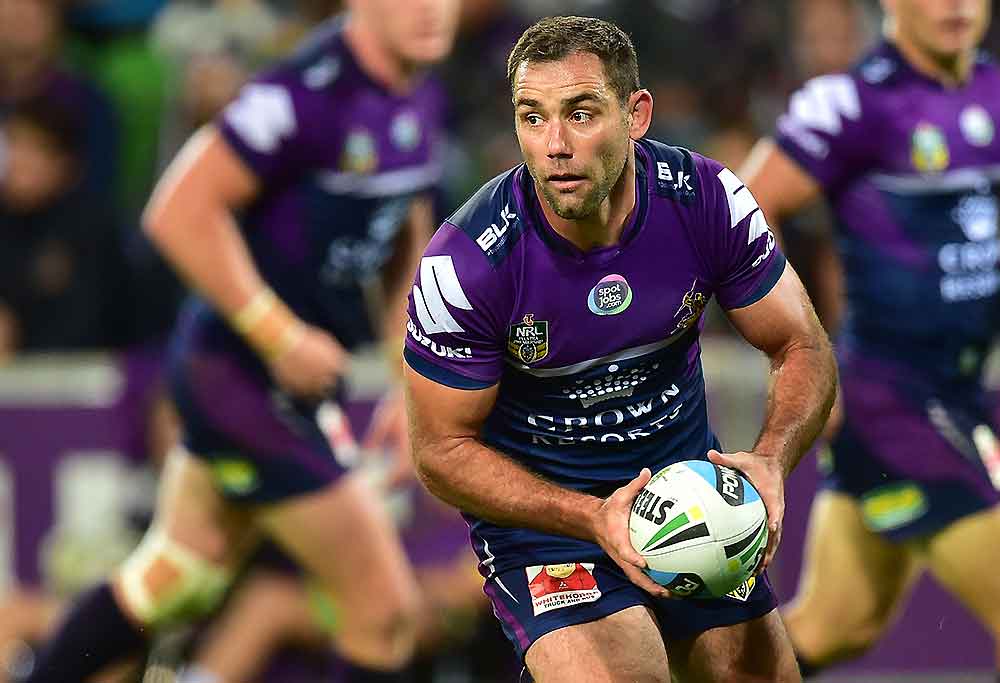NRL CEO Todd Greenberg has remained consistently silent on an issue that continues to ring loudly following last year’s Parramatta Eels salary cap saga – the impact third party agreements (TPAs) have on the competition.
Despite the Eels scandal, little information has yet been provided by the NRL regarding the nature, quantum or justification of TPAs in a league reliant on roster strength.
TPAs were introduced in 2006 following a push from players and agents to remove the cap on certain payments from third parties which were not deemed club or competition specific.
The NRL website notes that players can now earn unlimited amounts from sponsors “who are not associated with the club and who do not use the game’s intellectual property (no club logos, jerseys or emblems) provided these are pre-approved.”
The NRL goes on to state that these agreements may not be negotiated by the club as an incentive for a player to sign a contract, nor can they be guaranteed by the club.
This clearly did not happen at Parramatta, where management were complicit in organising and guaranteeing TPAs to top up players’ salaries.
But other clubs also seem to have issues managing the process. A quick investigation of the NRL’s website shows that pretty much every club has been fined for not disclosing or treating player payments correctly.
While some are minor and administrative in nature, others are not.
Outside of Parramatta, other serious breaches include Canterbury in 2002, New Zealand in 2006, Melbourne in 2010, Cronulla in 2014, and the Titans in 2014.

Why is this all so difficult to manage? The answer lies in the significant benefit TPAs provide in strengthening a team’s roster.
The NRL does not provide a breakdown of TPA amounts by club or player, but does state that individual players registered third party agreements totalled in excess of $15 million in 2015.
This would equate to an average of $938,000 per club, but clearly some clubs are stronger than others.
Fairfax columnist Adrian Proszenko notes an estimated “seven-figure discrepancy between what the rich and poor franchises are able to bring in for their players”, in line with estimates also provided by Phil Gould.
Whatever the number may be, it is clear that TPAs managed effectively can add significant extra funds to pay players, providing a strong benefit in attracting and retaining the talent required to win a premiership.
With so much on the line, it is understandable how important it is for clubs to get the balance of TPAs and salaries correct, particularly as executives are usually judged on the performance of their team on the field.
And herein lies the problem. The NRL’s system relies on the clubs to exclude themselves from any negotiations or even discussions surrounding TPAs, despite the fact they potentially make the difference between having a competitive roster or not.
Is this realistic or is it even possible? Wouldn’t every team want to know what its players are getting paid in terms of both salaries and endorsements and sponsorships if one of the key reasons for players to move between clubs is financial remuneration?
Understandably, club bosses are not exactly bursting at the seams to speak about the process, given the implications of getting it wrong.
But a remarkably candid article by former Cronulla Shark’s Chairman Damian Irvine sheds more light as to how the TPAs operate within the clubs’ confines:
The way things are done is that agents go to clubs and say “player X is off contract next year, he’s looking for $150,000 salary on the cap, and another $50,000 in third party deals”.
The better resourced clubs have club directors or staff working full-time on finding and facilitating third party deals wherever they can. It makes them more attractive to players, and agents, and it means they can spend more on their roster than other clubs.
The stupidity of the situation the game has created with these third party deals is that the resources of the game, that is underpaid office staff and commercial staff who are working their backsides off to fill regular club inventory sales, hospitality and signage to keep your club alive and commercially viable are now expected, pressured mostly, into finding and filling third party obligations that the football manager has included to win the services of a player.
Then, although not allowed to be guaranteed in the contract to lure the player to the club, if for some reason a third party sponsor doesn’t pay the player, goes broke, or gets upset with player behaviour or the world in general and decides they won’t honour the deal, the star player and his agent come banging on the CEOs door demanding their money that was ‘promised’ and using it as a reason to get out of the club and go somewhere else where they will get their extra cash.
Irvine’s article indicates that, quite contrary to the NRL’s view of TPAs sitting outside of team activities, clubs are in fact allocating fulltime resources to sourcing and facilitating deals for players. He finishes his article with the following comment:
“I know one thing for certain, all the wage bills, phone bills, petrol and time spent on obtaining these third party deals are sent to and paid by your club.”
On a Twitter fan forum in May 2016, Greenberg was questioned about the opaque nature of TPAs and how fans should interpret them. He responded as follows:
“Clearly it’s something we need to do a better job of explaining because telling that story and making sure people understand the intricate details of how third party agreements work is important. We want to see it done in a fair, level and transparent playing field.”
Almost a year later, his silence is deafening.































































































